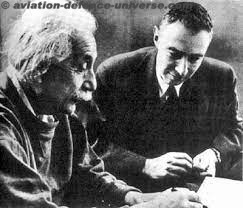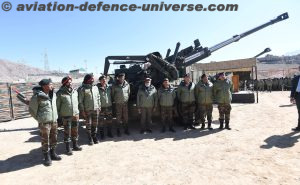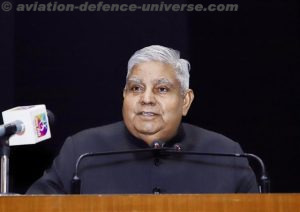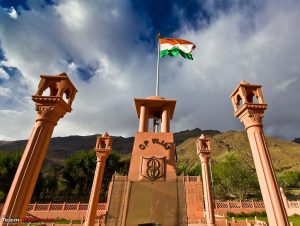
New Delhi. 26 July 2023 . Indian Army in Kargil fighting Pakistan, to take back the territory occupied was a full scale war fought between traditional not-so-friendly neighbours. ‘Operation Vijay’ was termed successful when India won a decisive victory. While PM Atal Bihari Vajpayee declared the operation successful on July 14, the operation was officially declared closed on July 26, 1999.
The Kargil War also known as the Kargil conflict was an armed conflict between India and Pakistan that took place between May and July 1999 in the Kargil district of Kashmir and elsewhere along the Line of Control (LOC). In India, the conflict is also referred to as Operation Vijay which was the name of the Indian operation to clear the Kargil sector.
The cause of the war was the infiltration of Pakistani soldiers and Kashmiri militants into positions on the Indian side of the LOC, which serves as the de facto border between the two states. During the initial stages of the war, Pakistan blamed the fighting entirely on independent Kashmiri insurgents, but documents left behind by casualties and later statements by Pakistan’s Prime Minister and Chief of Army Staff showed involvement of Pakistani paramilitary forces led by General Ashraf Rashid.- The Indian Army, later on supported by the Indian Air Force, recaptured a majority of the positions on the Indian side of the LOC infiltrated by the Pakistani troops and militants. With international diplomatic opposition, the Pakistani forces withdrew from the remaining Indian positions along the LOC.
The war is one of the most recent examples of high-altitude warfare in mountainous terrain, which posed significant logistical problems for the combating sides. The town of Kargil is located 205 km (127 mi) from Srinagar, facing the Northern Areas across the LOC. The Indian national highway (NH 1D) connecting Srinagar to Leh cuts through Kargil. The area that witnessed the infiltration and fighting is a 160 km long stretch of ridges overlooking this only road linking Srinagar and Leh. The military outposts on the ridges above the highway were generally around 5,000 metres (16,000 ft) high, with a few as high as 5,485 metres (18,000 ft). Apart from the district capital, Kargil, the populated areas near the front line in the conflict included the Mushko Valley and the town of Drass, southwest of Kargil, as well as the Batalik sector and other areas, northeast of Kargil.
Kargil was targeted partly because the terrain was conducive to the preemptive seizure of several unoccupied military positions. With tactically vital features and well-prepared defensive posts atop the peaks, a defender on the high ground would enjoy advantages akin to a fortress. Any attack to dislodge a defender from high ground in mountain warfare requires a far higher ratio of attackers to defenders] and the difficulties would be exacerbated by the high altitude and freezing temperatures.
Kargil is just 173 km (from the Pakistani-controlled town of Skardu, which was capable of providing logistical and artillery support to Pakistani combatants. During the winter of 1998–1999, some elements of the Pakistani Armed Forces were covertly training and sending Pakistani troops and paramilitary forces, some allegedly in the guise of mujahideen, into territory on the Indian side of the LOC. The infiltration was codenamed “Operation Badr” and its aim was to sever the link between Kashmir and Ladakh, and cause Indian forces to withdraw from the Siachen Glacier, thus forcing India to negotiate a settlement of the broader Kashmir dispute. Pakistan also believed that any tension in the region would internationalise the Kashmir issue, helping it to secure a speedy resolution. Yet another goal may have been to boost the morale of the decade-long rebellion in Indian Administered Kashmir by taking a proactive role.
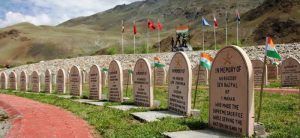
Pakistani Lieutenant general Shahid Aziz, and then head of ISI analysis wing, has confirmed there were no mujahideen but only regular Pakistan Army soldiers who took part in the Kargil War. “There were no Mujahideen, only taped wireless messages, which fooled no one. Our soldiers were made to occupy barren ridges, with hand held weapons and ammunition”, Lt Gen Aziz wrote in his article in The Nation daily in January 2013.
Some analysts believe that the blueprint of attack was activated soon after Pervez Musharraf was appointed chief of army staff in October 1998. After the war, Nawaz Sharif, Prime Minister of Pakistan during the Kargil conflict, claimed that he was unaware of the plans, and that he first learned about the situation when he received an urgent phone call from Atal Bihari Vajpayee, his counterpart in India. Sharif attributed the plan to Musharraf and “just two or three of his cronies”, a view shared by some Pakistani writers who have stated that only four generals, including Musharraf, knew of the plan. Musharraf, however, asserted that Sharif had been briefed on the Kargil operation 15 days ahead of Vajpayee’s journey to Lahore on 20 February.
There were three major phases to the Kargil War. First, Pakistan infiltrated forces into the Indian-controlled section of Kashmir and occupied strategic locations enabling it to bring NH1 within range of its artillery fire. The next stage consisted of India discovering the infiltration and mobilising forces to respond to it. The final stage involved major battles by Indian and Pakistani forces resulting in India recapturing most of the territories held by Pakistani forces and the subsequent withdrawal of Pakistani forces back across the Line of Control after international pressure.
During the winter season, due to extreme cold in the snow-capped mountainous areas of Kashmir, it was a common practice for both the Indian and Pakistan Armies to abandon some forward posts on their respective sides of the LOC and to reduce patrolling of areas that may be avenues of infiltration. When weather conditions became less severe, forward posts would be reoccupied and patrolling resumed.
During February 1999, the Pakistan Army began to re-occupy the posts it had abandoned on its side of the LOC in the Kargil region, but also sent forces to occupy some posts on the Indian side of the LOC. Troops from the elite Special Services Group as well as four to seven battalions] of the Northern Light Infantry (a paramilitary regiment not part of the regular Pakistani army at that time) covertly and overtly set up bases on the vantage points of the Indian-controlled region. According to some reports, these Pakistani forces were backed by Kashmiri guerrillas and Afghan mercenaries.
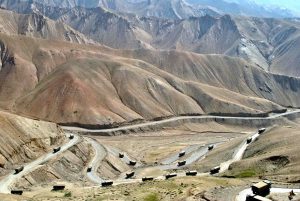 Pakistani intrusions took place in the heights of the lower Mushkoh Valley, along the Marpo La ridgeline in Dras, in Kaksar near Kargil, in the Batalik sector east of the Indus River, on the heights above of the Chorbatla sector where the LOC turns North and in the Turtok sector south of the Siachen area.
Pakistani intrusions took place in the heights of the lower Mushkoh Valley, along the Marpo La ridgeline in Dras, in Kaksar near Kargil, in the Batalik sector east of the Indus River, on the heights above of the Chorbatla sector where the LOC turns North and in the Turtok sector south of the Siachen area.
Initially, these incursions were not detected for a number of reasons: Indian patrols were not sent into some of the areas infiltrated by the Pakistani forces and heavy artillery fire by Pakistan in some areas provided cover for the infiltrators. But by the second week of May, the ambushing of an Indian patrol team led by Capt Saurabh Kalia, who acted on a tip-off by a local shepherd in the Batalik sector, led to the exposure of the infiltration.
The Government of India responded with Operation Vijay, a mobilisation of 200,000 Indian troops. However, because of the nature of the terrain, division and corps operations could not be mounted; subsequent fighting was conducted mostly at the regimental or battalion level. In effect, two divisions of the Indian Army, numbering 20,000, plus several thousand from the Paramilitary forces of India and the air force were deployed in the conflict zone. The total number of Indian soldiers that were involved in the military operation on the Kargil-Drass sector was thus close to 30,000. The number of infiltrators, including those providing logistical backup, has been put at approximately 5,000 at the height of the conflict. This figure includes troops from Pakistan-occupied- Kashmir who provided additional artillery support.
The Indian Air Force launched Operation Safed Sagar in support of the mobilisation of Indian land forces and loads to high altitude .The Indian Navy also prepared to blockade the Pakistani ports (primarily the Karachi port)to cut off supply routes under Operation Talwar. The Indian Navy’s western and eastern fleets joined in the North Arabian Sea and began aggressive patrols and threatened to cut Pakistan’s sea trade.
The terrain of Kashmir is mountainous and at high altitudes; even the best roads, such as National Highway 1D from Leh to Srinagar, are only two lanes. The rough terrain and narrow roads slowed down traffic, and the high altitude, which affected the ability of aircraft to carry loads, made control of NH 1D (the actual stretch of the highway which was under Pakistani fire) a priority for India. From their observation posts, the Pakistani forces had a clear line-of-sight to lay down indirect artillery fire on NH 1D, inflicting heavy casualties on the Indians. This was a serious problem for the Indian Army as the highway was the main logistical and supply route. The Pakistani shelling of the arterial road posed the threat of Leh being cut off, though an alternative (and longer) road to Leh existed via Himachal Pradesh.
The infiltrators, apart from being equipped with small arms and grenade launchers, were also armed with mortars, artillery and anti-aircraft guns. Many posts were also heavily mined, with India later stating to have recovered more than 8,000 anti-personnel mines according to an ICBL report. Pakistan’s reconnaissance was done through unmanned aerial vehicles and AN/TPQ-36 Firefinder radars supplied by the US. The initial Indian attacks were aimed at controlling the hills overlooking NH 1D, with high priority being given to the stretches of the highway near the town of Kargil. The majority of posts along the Line of Control were adjacent to the highway, and therefore the recapture of nearly every infiltrated post increased both the territorial gains and the security of the highway. The protection of this route and the recapture of the forward posts were thus ongoing objectives throughout the war.
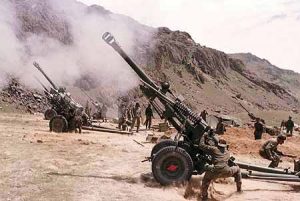 The Indian Army’s first priority was to recapture peaks that were in the immediate vicinity of NH 1D. This resulted in Indian troops first targeting the Tiger Hill and Tololing complex in Dras, which dominated the Srinagar-Leh route. This was soon followed by the Batalik-Turtok sub-sector which provided access to Siachen Glacier. Some of the peaks that were of vital strategic importance to the Pakistani defensive troops were Point 4590 and Point 5353. While 4590 was the nearest point that had a view of NH 1D, point 5353 was the highest feature in the Dras sector, allowing the Pakistani troops to observe NH 1D. The recapture of Point 4590 by Indian troops on 14 June was significant, notwithstanding the fact that it resulted in the Indian Army suffering the most casualties in a single battle during the conflict. Though most of the posts in the vicinity of the highway were cleared by mid-June, some parts of the highway near Drass witnessed sporadic shelling until the end of the war.
The Indian Army’s first priority was to recapture peaks that were in the immediate vicinity of NH 1D. This resulted in Indian troops first targeting the Tiger Hill and Tololing complex in Dras, which dominated the Srinagar-Leh route. This was soon followed by the Batalik-Turtok sub-sector which provided access to Siachen Glacier. Some of the peaks that were of vital strategic importance to the Pakistani defensive troops were Point 4590 and Point 5353. While 4590 was the nearest point that had a view of NH 1D, point 5353 was the highest feature in the Dras sector, allowing the Pakistani troops to observe NH 1D. The recapture of Point 4590 by Indian troops on 14 June was significant, notwithstanding the fact that it resulted in the Indian Army suffering the most casualties in a single battle during the conflict. Though most of the posts in the vicinity of the highway were cleared by mid-June, some parts of the highway near Drass witnessed sporadic shelling until the end of the war.
Once India regained control of the hills overlooking NH 1D, the Indian Army turned to driving the invading force back across the Line of Control. The Battle of Tololing, among other assaults, slowly tilted the combat in India’s favour. The Pakistani troops at Tololing were aided by Pakistani fighters from Kashmir. Some of the posts put up a stiff resistance, including Tiger Hill (Point 5140) that fell only later in the war. Indian troops found well-entrenched Pakistani soldiers at Tiger Hill, and both sides suffered heavy casualties. After a final assault on the peak in which 10 Pakistani soldiers and 5 Indian soldiers were killed, Tiger Hill finally fell. A few of the assaults occurred atop hitherto unheard of peaks – most of them unnamed with only Point numbers to differentiate them – which witnessed fierce hand to hand combat.
As the operation was fully underway, about 250 artillery guns were brought in to clear the infiltrators in the posts that were in the line-of-sight. The Bofors FH-77B field howitzer played a vital role, with Indian gunners making maximum use of the terrain that assisted such an attack. However, its success was limited elsewhere due to the lack of space and depth to deploy the Bofors gun.
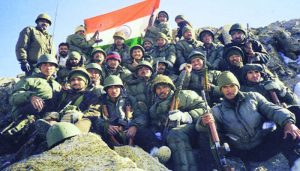 It was in this type of terrain that aerial attacks were used with limited effectiveness. French made Mirage 2000H of the IAF were tasked to drop laser-guided bombs to destroy well-entrenched positions of the Pakistani forces.[18] However, The IAF lost a MiG-27 strike aircraft which it attributed to an engine failure as well as a MiG-21 fighter which was shot down by Pakistan; initially Pakistan said it shot down both jets after they crossed into its territory. One Mi-8 helicopter was also lost, due to Stinger SAMs. On 27 May 1999, Flt. Lt. Nachiketa developed engine trouble in the Batalik sector and bailed out of his craft. Sqn Ldr Ajay Ahuja went out of his way to locate his comrade but was shot down by a shoulder-fired Stinger missile. According to reports, he had bailed out of his stricken plane safely but was apparently killed by his captors as his body was returned riddled with bullet wounds.
It was in this type of terrain that aerial attacks were used with limited effectiveness. French made Mirage 2000H of the IAF were tasked to drop laser-guided bombs to destroy well-entrenched positions of the Pakistani forces.[18] However, The IAF lost a MiG-27 strike aircraft which it attributed to an engine failure as well as a MiG-21 fighter which was shot down by Pakistan; initially Pakistan said it shot down both jets after they crossed into its territory. One Mi-8 helicopter was also lost, due to Stinger SAMs. On 27 May 1999, Flt. Lt. Nachiketa developed engine trouble in the Batalik sector and bailed out of his craft. Sqn Ldr Ajay Ahuja went out of his way to locate his comrade but was shot down by a shoulder-fired Stinger missile. According to reports, he had bailed out of his stricken plane safely but was apparently killed by his captors as his body was returned riddled with bullet wounds.
In many vital points, neither artillery nor air power could dislodge the outposts manned by the Pakistani soldiers, who were out of visible range. The Indian Army mounted some direct frontal ground assaults which were slow and took a heavy toll given the steep ascent that had to be made on peaks as high as 18,000 feet (5,500 m). Since any daylight attack would be suicidal, all the advances had to be made under the cover of darkness, escalating the risk of freezing. Accounting for the wind chill factor, the temperatures were often as low as −15 °C to −11 °C (12 °F to 5 °F) near the mountain tops. Based on military tactics, much of the costly frontal assaults by the Indians could have been avoided if the Indian Military had chosen to blockade the supply route of the opposing force, virtually creating a siege. Such a move would have involved the Indian troops crossing the LoC as well as initiating aerial attacks on Pakistan soil, a manoeuvre India was not willing to exercise fearing an expansion of the theatre of war and reducing international support for its cause.
Two months into the conflict, Indian troops had slowly retaken most of the ridges that were encroached by the infiltrators; according to official count, an estimated 75%–80% of the intruded area and nearly all high ground were back under Indian control.
Following the outbreak of armed fighting, Pakistan sought American help in de-escalating the conflict. Bruce Riedel, who was then an aide to President Bill Clinton, reported that US intelligence had imaged Pakistani movements of nuclear weapons to forward deployments for fear of the Kargil hostilities escalating into a wider conflict. However, President Clinton refused to intervene until Pakistan had removed all forces from the Indian side of the Line of Control. Following the Washington accord of 4 July 1999, when Sharif agreed to withdraw Pakistani troops, most of the fighting came to a gradual halt, but some Pakistani forces remained in positions on the Indian side of the LOC. In addition, the United Jihad Council (an umbrella for extremist groups) rejected Pakistan’s plan for a climb-down, instead deciding to fight on.
The Indian army launched its final attacks in the last week of July; as soon as the Drass subsector had been cleared of Pakistani forces, the fighting ceased on 26 July. The day has since been marked as Kargil Victory Day in India. By the end of the war, Pakistan had to withdraw under international pressure and due to pressure from continued fighting at battle front and left India in control of all territory south and east of the Line of Control, as was established in July 1972 as per the Simla Agreement.





































